Dealer in Rare and First-Edition Books: Western Americana; Mystery, Detective, and Espionage Fiction
L. A. Huffman 16" X 18 3/4" Hand-Colored, Signed Photograph, "Sioux Warriors Grave, North Montana 1879"
HUFFMAN, L. A. [PHOTOGRAPHER]
Other works by HUFFMAN, L. A.Publication: L A Huffman Studios, 1879, Miles City, Montana
Scaffold burial, was quite extensively practiced among the Plains Indians, notably the Sioux. From what can be learned, the choice of this mode depends greatly on the facilities present; where timber abounds, trees being used; if absent, scaffolds being employed. These scaffolds are 7 to 8 feet high, 10 feet long, and 4 or 5 wide. Four stout posts, with forked ends, are first set firmly in the ground, and then in the forks are laid cross and side poles, on which is made a flooring of small poles. The body is then carefully wrapped, so as to make it watertight, and laid to rest on the poles. The reason why Indians bury in the open air instead of under the ground is for the purpose of protecting their dead from wild animals. In new countries, where wolves and bears are numerous, a dead body will be dug up and devoured, though it be put many feet under the ground. Usually a body buried by this method is kept on the scaffold for a period of one year. This attractive Huffman hand-colored photograph is signed by Huffman in white ink across the bottom of the photograph: "A Sioux Warriors grave North Montana 1879 / L. A. Huffman." Collector and Huffman expert Gene Allen writes, "Laton Alton Huffman arrived in Miles City, Montana Territory in December of 1879. He was 25 years old and had come to seek the recently vacated position of post photographer at nearby Fort Keogh. He was appointed post photographer, an unpaid position that provided a dirt floor log studio and an opportunity to make and sell photographs. This was a rapidly changing time in Montana's history. Hostilities between early settlers and Native Americans were drawing to a close and reservation life was beginning. The demise of the great buffalo herds was near, clearing the way for large scale cattle ranching. The railroad arrived in Miles City in 1881 and changed everything. The arrival of large numbers of farmers with their plows and fences would permanently alter the landscape of eastern Montana. During all of this, Huffman was there taking photographs." A choice item from one of the premier photographers of the American West. Fine copy.
Inventory Number: 48707Sold -- Contact us
![L. A. Huffman 16" X 18 3/4" Hand-Colored, Signed Photograph, "Sioux Warriors Grave, North Montana 1879" HUFFMAN, L. A. [PHOTOGRAPHER]](/media/images/large/48707.jpg)
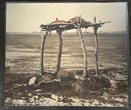
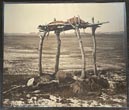
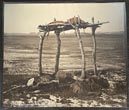
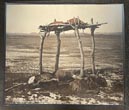
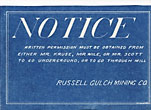
![Candy LORD, SHELDON [LAWRENCE BLOCK]](/media/images/thumb/46435.jpg)
![Three Days At Gettysburg, Essays On Confederate And Union Leadership GALLAGHER, GARY W. [EDITOR]](/static/basic_cms_store2/img/CoverNotFound3.jpg)






